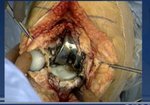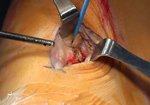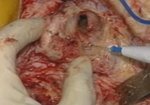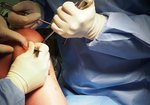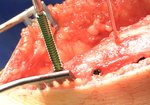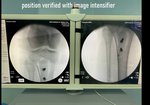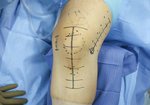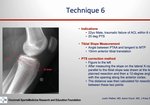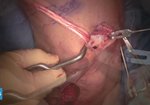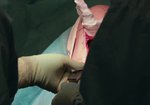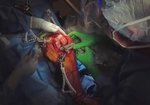
Video Player is loading.
Current Time 0:00
/
Duration 0:00
Loaded: 0%
0:00
Stream Type LIVE
1x
- 0.5x
- 0.75x
- 1x, selected
- 1.25x
- 1.5x
- 1.75x
- 2x
- Chapters
- descriptions off, selected
- captions settings, opens captions settings dialog
- captions off, selected
This is a modal window.
Beginning of dialog window. Escape will cancel and close the window.
End of dialog window.
10 seconds
Playback speed
This is a modal window. This modal can be closed by pressing the Escape key or activating the close button.
956 views
September 11, 2015
Slope changing osteotomy for a recurvatum injury resulting in a negative tibial slope
This video ...
read more ↘ demonstrates a novel technique for carrying out a slope changing osteotomy in a patient with a 14-degree negative slope
As an 18 year old the patient was involved in an RTA resulting in a recurvatum injury.
For 10 years he has had pain and disability such that he could only walk short distances and do minimal physical activity
This is a difficult injury to treat with many patients ending up with poor quality of life and poor function
Traditional approaches involve the use of metal plates and the slope change being carried out from an anteromedial approach.
This novel technique makes us of the tibial tubercle, which is used as a biological plate.
The approach involves taking off the tubercle to gain access to the anterior aspect of the tibia
Guide wires are then placed up to within 1cm of the insertion of the PCL on the tibia and the tibia is then osteotomised and progressively opened to recreate a positive slope.
Careful pre op planning is carried out using digital software and once the appropriate correction has been achieved bone wedges are used to graft the osteotomy and fill the gap. These are made specifically to the dimensions of the opening osteotomy from femoral head allograft.
Once the bone graft has been inserted the tibial tubercle is then placed back into position and secured with a series of small fragment screws.
I feel this is an excellent way of treating these difficult cases and in the 7 cases that we have done within our group we have had excellent results.
↖ read less
This video ...
read more ↘ demonstrates a novel technique for carrying out a slope changing osteotomy in a patient with a 14-degree negative slope
As an 18 year old the patient was involved in an RTA resulting in a recurvatum injury.
For 10 years he has had pain and disability such that he could only walk short distances and do minimal physical activity
This is a difficult injury to treat with many patients ending up with poor quality of life and poor function
Traditional approaches involve the use of metal plates and the slope change being carried out from an anteromedial approach.
This novel technique makes us of the tibial tubercle, which is used as a biological plate.
The approach involves taking off the tubercle to gain access to the anterior aspect of the tibia
Guide wires are then placed up to within 1cm of the insertion of the PCL on the tibia and the tibia is then osteotomised and progressively opened to recreate a positive slope.
Careful pre op planning is carried out using digital software and once the appropriate correction has been achieved bone wedges are used to graft the osteotomy and fill the gap. These are made specifically to the dimensions of the opening osteotomy from femoral head allograft.
Once the bone graft has been inserted the tibial tubercle is then placed back into position and secured with a series of small fragment screws.
I feel this is an excellent way of treating these difficult cases and in the 7 cases that we have done within our group we have had excellent results.
↖ read less
Comments 4
Login to view comments.
Click here to Login

